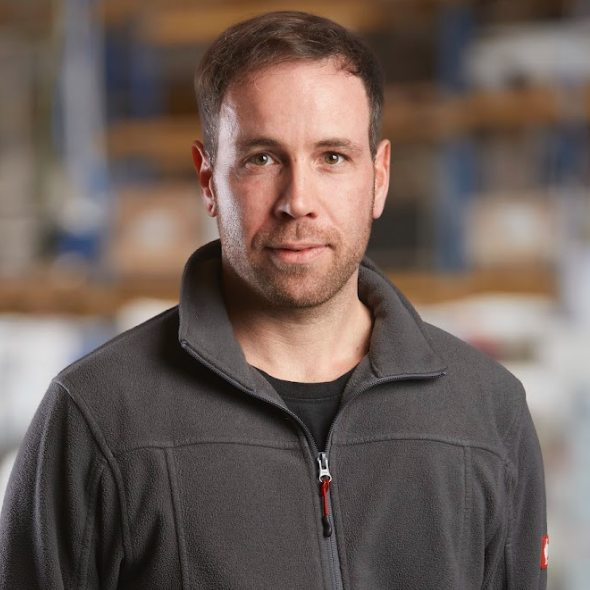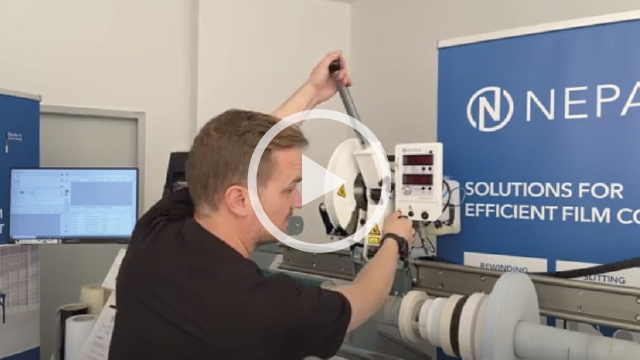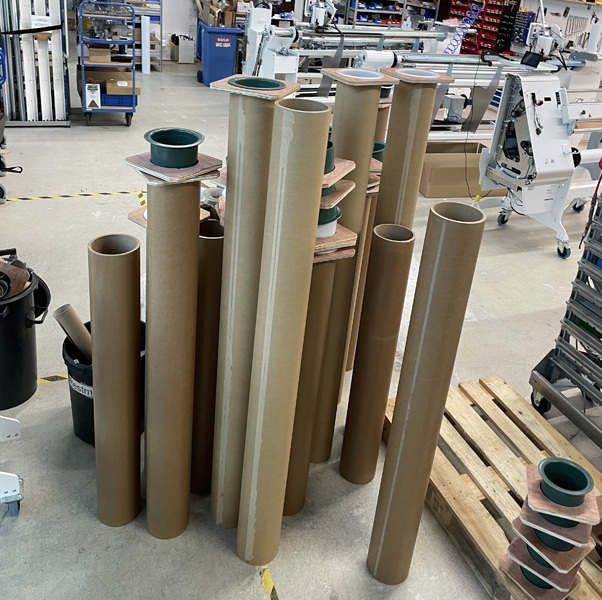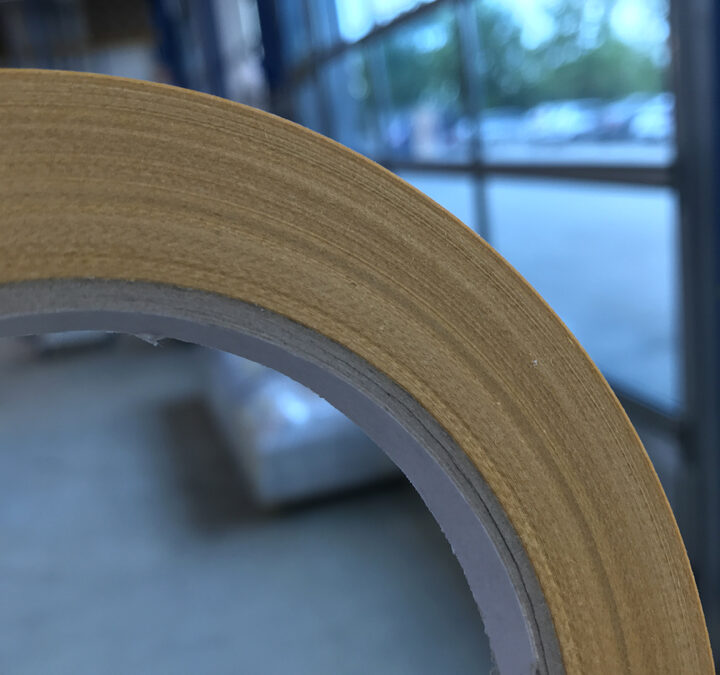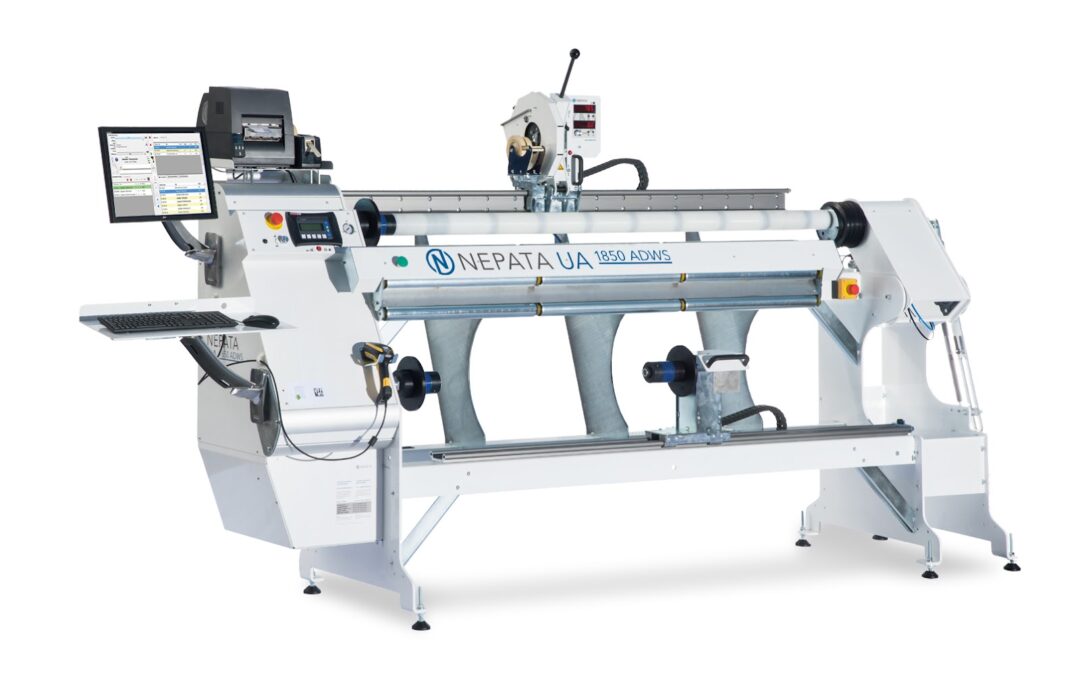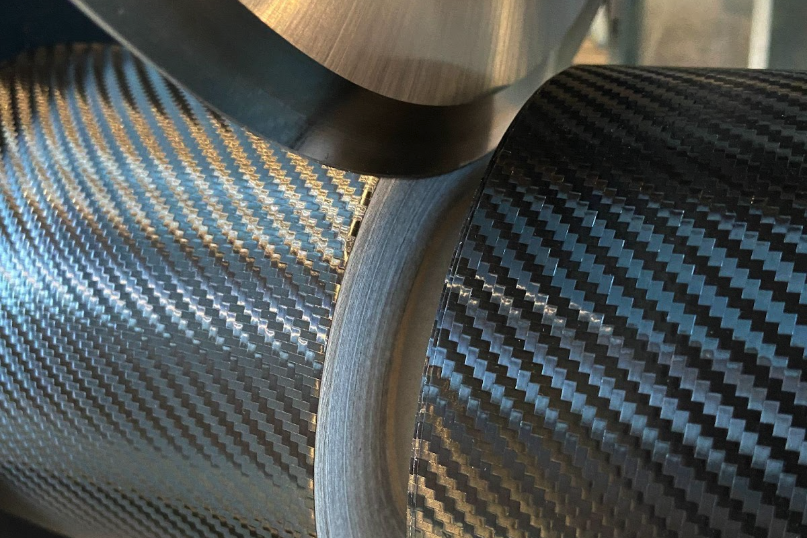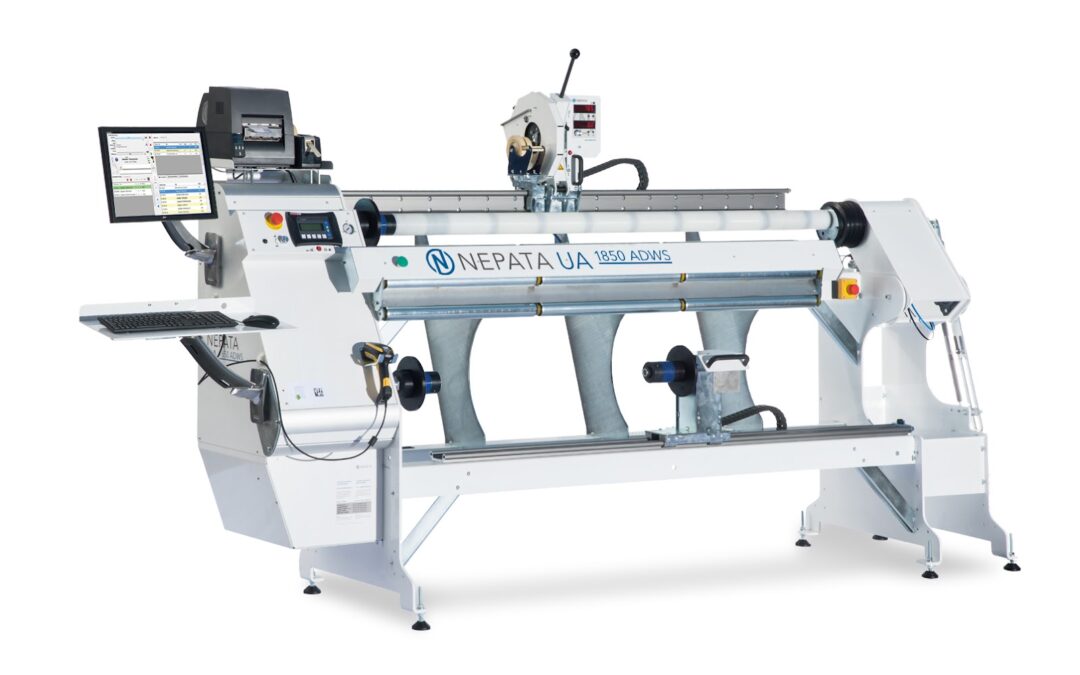When a machine has paid for itself in just a few years. When the return on investment is several hundred percent. Then it’s a no-brainer to buy this machine, says Nepata CEO Fabian Franke.
By NEPATA CEO Fabian Franke, June 2024
Summary
Experience shows: The productivity gain with rewinding and cut-off solutions from Nepata is 40 percent and more compared to simple converting equipment. In this article, this is demonstrated using the example of a UA 1650 ADWS, the best-selling Nepata machine. Even if the machine saves just one hour a day for a warehouse employee, it will have paid for itself in a maximum of five years – with a service life of well over 10 years. In fact, the savings potential is even greater because the precision conversion center also avoids material waste, errors and complaints and improves the workflow in the warehouse.
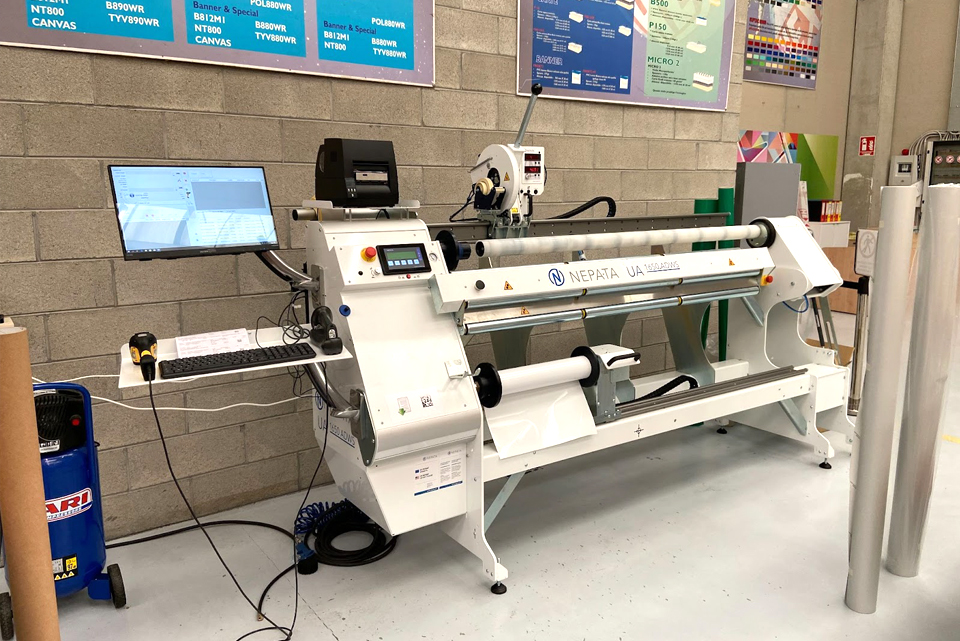
Converting films – expensive manual work or expensive machine?
Anyone who does not convert film media on an industrial scale is faced with a dilemma: should they rely on expensive manual labor or expensive machines? In principle, simple devices are initially sufficient for wrapping, cutting to length and cutting off. But the manual work involved makes the business tedious. And it is gnawing away at profitability. After all, warehouse employees have to be paid dearly – if they can be found at all. On the other hand, an investment in more automation, specifically in a rewinding and cut-off solution worth the value of a mid-range car, must first be made.
Yes, it is:
If you take a closer look, the supposedly expensive machine suddenly becomes very affordable.
I would like to demonstrate this to you using the Nepata UA1650 ADWS precision conversion center as an example.
Scenario 1: If the machine only saves one working hour a day …
Our example warehouse worker Max has an hourly rate of around 35 euros for a productive working hour in Germany. Vacation, illness, unproductive times such as training, meetings, etc. are already factored in here. In an average month, he works 18 to 19 days. If Max saves just one hour a day on converting tasks by using the Nepata UA1650 ADWS, the machine will have paid for itself after five years. With medium capacity utilization, significantly more, rather twice as much, work savings should be possible. The machine would have paid for itself after 2.5 years for this reason alone. The machine easily has a service life of ten years or more.
Experience: 40 percent more productivity
I have learned from users that a time saving of one to two hours per day is absolutely realistic. These show:
The productivity gain with rewinding and cut-off solutions from Nepata is 40 percent or more compared to simple converting equipment.
This means that the machines in the Nepata UA series are among the most efficient and productive converting solutions for film media in the world. The combination with the ConvertPlus control software in particular allows them to perform cuts quickly.
How Nepata machines achieve high productivity
First of all: This list is not complete and I don’t want to go into technical details here. But I want you to understand where the potential for productivity lies.
- Nepata machines run fast.
The wrapping speed is up to 1.5 meters per second.
- Nepata machines are smartly designed.
This saves time when clamping and unclamping cores and rollers, for example.
- Nepata machines have a high degree of automation.
First and foremost is the automatic cutting to length – of course after precise automatic length measurement during wrapping.
- Nepata machines are software-controlled.
The use of our self-developed control software provides an enormous boost to productivity. control software. This optimizes production processes by connecting directly to your ERP system. For example, several orders for the same material, let’s say a black adhesive film, can be combined across several delivery bills. Our example worker Max only has to take the corresponding mother roll from the shelf once, insert it and process it instead of picking it up several times per shift. In the “traditional” way, he would probably have processed delivery bill after delivery bill without knowing that he would need this material more often today.
Creating more orders with the same staff
But what does warehouse clerk Max do with the time he saves? Believe me, he won’t be bored. Because let’s be honest: your warehouse crew is probably already struggling to keep up with orders …
Your employee can process more orders in the same amount of time. Orders that you may have had to turn down in the past.
The return on investment is already increasing.
If employees are now relieved by more automation and software support, the stress is removed. This ultimately means less sick leave and less fluctuation. And so the ROI increases again. This is because downtime is just as unprofitable as finding and training new staff.
Scenario 2: If the machine only avoids 2% material waste…
Let’s move away from working hours and look at the material. Thanks to the high measuring accuracy of our machines:
You charge the customer five meters and you deliver five meters to the customer – no more and no less. You end up selling 50 meters from a 50-meter roll.
With simpler rewinding machines, a small amount of turning is required for each winding process so that the customer is not supplied with a roll that is too short. At the end of the roll, however, there won’t be a whole meter left, but an unsaleable remainder. Let’s assume that only 49 meters can be sold per 50-meter roll. This corresponds to two percent waste of the total film volume. With a purchasing volume of 500,000 euros per year, the Nepata UA machine saves 10,000 euros by avoiding material waste. This means that amortization is already achieved by the end of the fourth year of operation – through this effect alone.
Fewer errors, more profitability with software support
And – you guessed it – there is even more savings potential when it comes to materials: With the support of the ConvertPlus software, typical mistakes can be avoided. That rolls are sent out that are too long or too short, the wrong colors, matt instead of glossy, etc. Or six meters of ten meters are processed for the customer, but the customer is sent the remaining four meters of the roll because the employee made a mistake. In short: errors that lead to complaints from your customers, tie up capacity, increase the use of materials and therefore eat away at profitability.
This is how our control software helps to avoid errors:
- ConvertPlus automates the input process on the machine so that no mistakes can be made and nothing can be forgotten.
- A central feature of ConvertPlus is that by barcode scans to compare the material with the actual order so that there can be no mix-ups.
Positive side effect: optimization of warehouse logistics
ConvertPlus also provides you with a tool for better warehouse logistics. Just three aspects are briefly outlined here:
- Overview of stock
The barcode labels mentioned above allow you to see how many meters are left on a roll at any time. This helps to choose a roll that still has a “meaningful” remainder instead of unsaleable short rolls. ConvertPlus also offers the option of transferring data from completed conversion jobs back to your ERP software. This gives you an overview of your stock in real time.
- Avoid overlapping
It is also possible to enter the storage date of a material. This means it can be processed according to the “first in first out” principle before it becomes unusable and has to be disposed of.
- Successful complaint to the manufacturer
Batch number tracking helps you to make successful complaints to film manufacturers in the event of material defects.
Conclusion: Converting can be profitable. With the right investment.
The savings in working time alone make the purchase of a machine from the Nepata UA series for wrapping and cutting highly profitable. The savings in material waste alone lead to rapid amortization. On top of this, there are other optimizations relating to complaints and warehouse logistics that can be tapped into and that add up in monetary terms over the years. All effects taken together result in a return on investment of several 100 percent. The Nepata conversion center UA1650 ADWS pays for itself after just a few years. Or to put it another way:
The purchase of the machine is a no-brainer. Anyone who doesn’t buy them has no business sense.
And beyond the money: the improved workflow forms the basis for satisfied employees, for long-term customer relationships and ultimately for growth.
Would you like to increase the profitability of your converting processes? Arrange a short presentation on the workflow with Nepata machines and software here …

